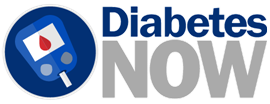Premier - Local Endocrinologist
-
Diabetes
Diabetes is the condition in which the body does not properly process food for use as energy. Most of the food we eat is turned into glucose, or sugar, for our bodies to use for energy. The pancreas, an organ that lies near the stomach, makes a hormone called insulin to help glucose get into the cells of our bodies.
-
Loading the player...
Understanding Type 1 and Type 2 Diabetes <p>Dr. Akshay Jain MD, FRCPC, FACE, CCD, ECNU, DABIM, DABOM, Clinical and Research Endocrinologist, talks about what diabetes is and what the differences are between type 1 and type 2 diabetes.</p>Dr. Akshay Jain MD, FRCPC, FACE, CCD, ECNU, DABIM, DABOM, Clinical and Research Endocrinologist, talks about what diabetes is and what the differences are between type 1 and type 2 diabetes.
-
Understanding Type 1 and Type 2 Diabetes
What is diabetes? There are two kinds of diabetes: type 1 and type 2 diabetes mostly. And they’re interrelated but not similar, and that’s related to insulin.
Insulin is secreted by the pancreas, which is big like my hand, it’s right in the back of the stomach, and when we eat, the food is absorbed, goes next to the pancreas that sees the food, and sends insulin with it in order to inform the whole body that the food is in the blood.









